Latent Interpolate Upscale: Expanding FLUX and SDXL's Denoising Range

When upscaling images with FLUX or SDXL models, a common challenge arises: low denoise values can introduce strange artifacts, while higher values (exceeding 0.6) may compromise the original image's composition, facial features, or overall aesthetic. Fortunately, several strategies can address these issues.
You can use a different model for the upscale (Ultrasharp, DAT, or some model from openmodeldb.info). You can also employ tile ControlNets with a good upscaling model. But we would like to use FLUX capabilities for precise details when creating hi-res image. Is there a solution without using a ControlNet or switching models?
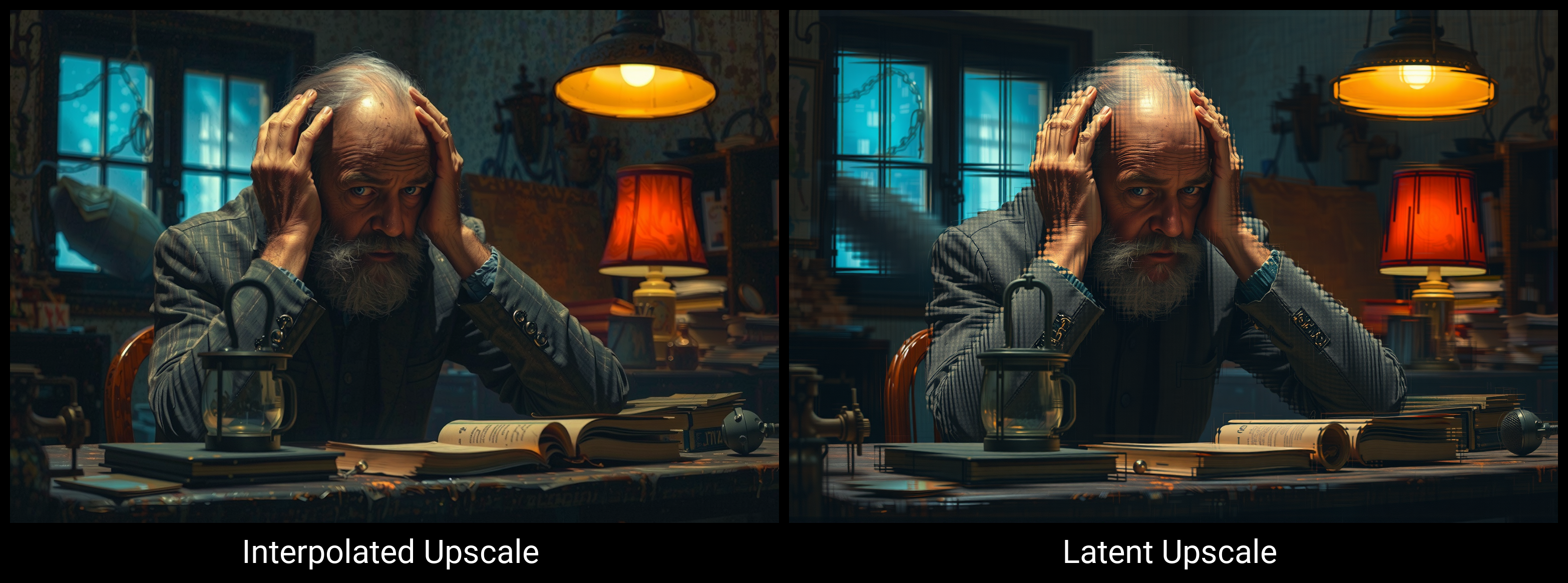
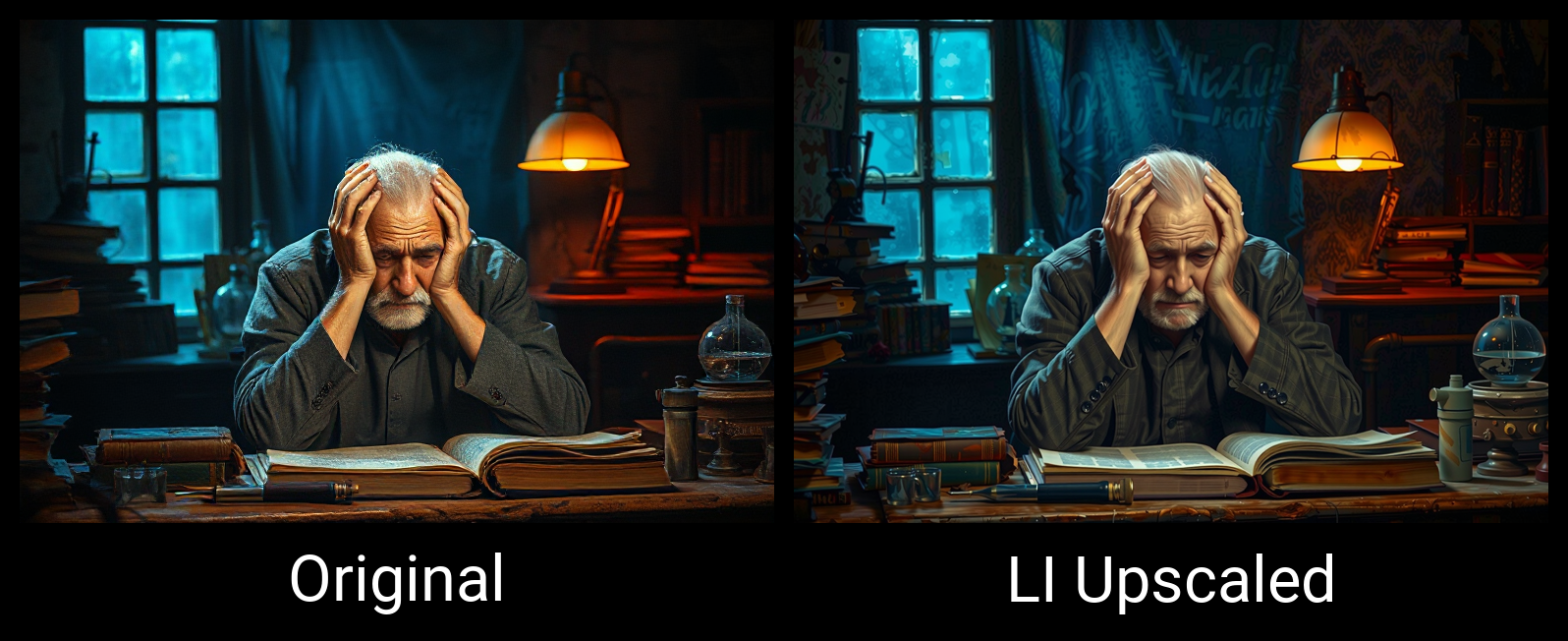
After some experiments I have made a group node for Comfy, which is mixing two latents to overcome these issues a bit. In the images above, you may see how this method fixes the artifacts caused by low denoise value when using Flux.1 model (you will encounter similar effects in SDXL models too). Also note how it keeps the composition from the initial image, because of lower denoise value. Explanation video tutorial will follow, meanwhile:
How Latent Interpolate Upscale Works
The workflow consists of taking the initial image, scaling it using a traditional algorithm (e.g., Lanczos), and incorporating it as a leading element for interpolation. The other element is the image upscaled by the latent upscaler node. These two latent representations are then interpolated in a variable ratio.
Benefits of the Method
- Better rendering of diverse formats (wideangle, longer "landscape" ratios)
- Better representation of characters/figures in the background
- Use of low denoising (named Denoise for Upscale in the node) value, 0.15-0.4 for upscaling
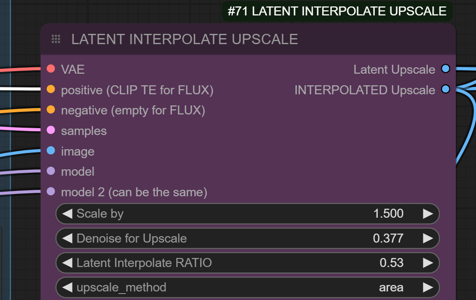
LIU Group node:
Scale by: Upscale amount
Denoise for Upscale: Amount of change (higher=more changes to the original image). Set to 0.15+ for LIU
Latent Interpolate RATIO: lower= latent upscale dominant, higher= Lanczos upscale dominant. Use 0.4+ to remove upscale artifacts
Results




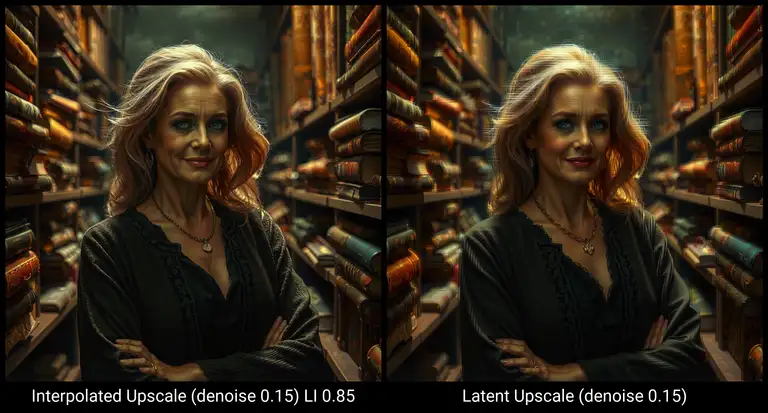
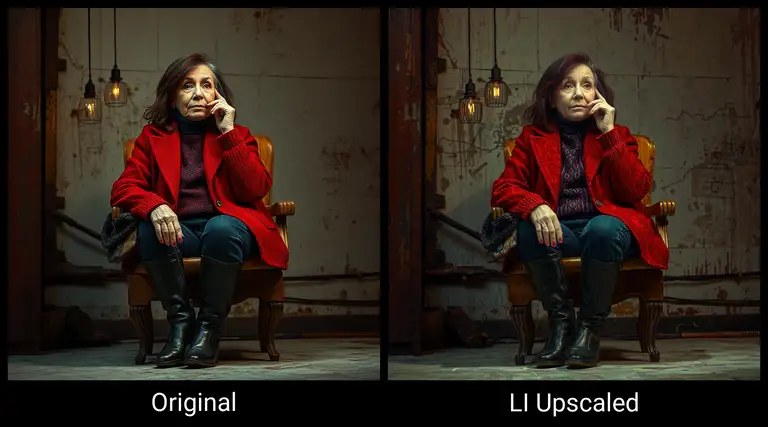
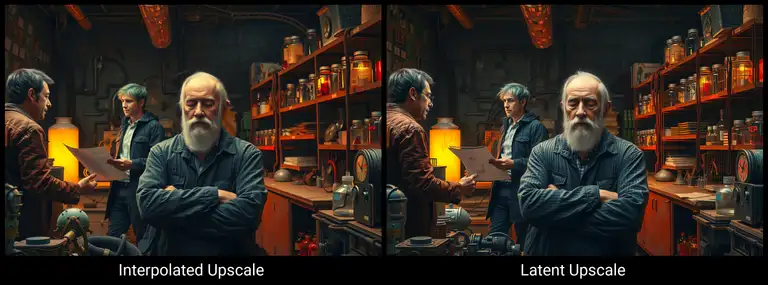
Variants Suggestions
Latent Interpolate Upscale is not much slower than Latent Upscale. Instead of fast Lanczos interpolation, you may also experiment with various upscaling models for the combination of latents.
Download
- Latent Interpolate Upscale for Comfy Workflows on Github
- Drag&drop workflows or images into your ComfyUi workplace window
- Workflows are using Comfyroll Studio nodes for image comparison, install it via Comfy UI Manager
Note that there is a limit for FLUX when generating hi-res images—at higher resolution it is lacking performance and image quality. After your image composition and detailing is ready, use other upscaling methods and models to upscale to a very high resolution (using tiles).
Conclusion
'Latent Interpolate Upscale' brings some benefits when upscaling or generating hi-res wideangle images. By leveraging interpolation techniques, I have demonstrated the ability to expand the denoising range of FLUX and SDXL, enabling the creation images which are more close to the input, without using Controlnet (check an application of this upscale method in conjunction with CosXL edits). Latent Interpolate Upscale method is a kind of combination of img2img and latent upscale, bringing more details while retaining most of the original concept and achieving a reasonable speed.
References
- Download workflows resources for this article https://github.com/sandner-art/ai-research/tree/main/FLUX/UPSCALE-FLUX-Experiments
- Other ComfyUI workflows and settings https://github.com/sandner-art/ai-research
- How to install ComfyUI

